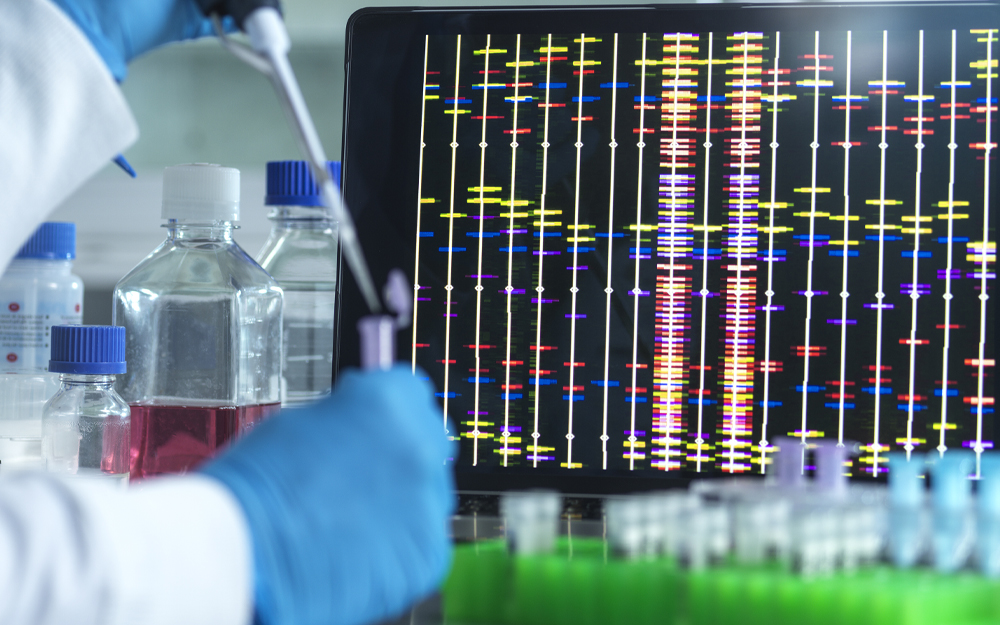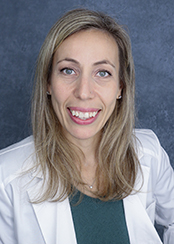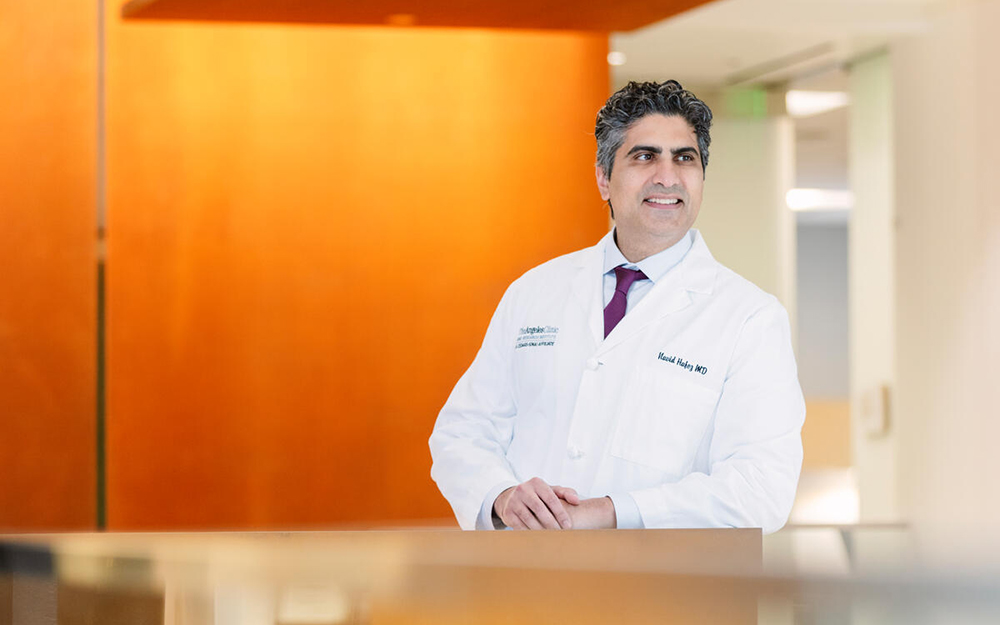How Do Your Genes Fit? Cracking the Code on Breast Cancer Risk
Date
January 2, 2024

Date
January 2, 2024
Credits
Medical providers featured in this article

In Brief
{{cta-block}}
Knowledge is power, especially when it comes to knowing your individual breast cancer risk.
While no one has a zero risk of breast cancer, individual risk is determined by many factors—some that can be changed, such as lifestyle choices, and others that can’t, such as age or what’s in your DNA. A growing number of women are eligible for genetic testing, especially if they’ve had a first degree relative, such as a mom or sister, who has had breast cancer.
“Breast cancer is a curable disease,” said Lauren DeStefano, MD, a breast surgical oncologist in Cedars-Sinai Cancer’s Tarzana location. “Sometimes the words are scarier than the disease itself. So, when I meet someone and go over all these risk factors and steps we can take to mitigate them, it’s important to keep in mind that these are things they can control.”
“We work with patients to make this information empowering. A cancer that is detected at an early stage is a cancer that is most treatable.”
There’s no downside to having a full picture of cancer risk, DeStefano said.
At the Cedars-Sinai Cancer Breast Oncology High Risk Program in Tarzana, a collaboration with RadNet and Ambry Genetics, patients receive genetic counseling and consult with breast cancer experts to create a comprehensive plan for further testing and risk management tailored to their specific needs.
John E. Lee, a genetic counselor, and DeStefano broke down what every person with cancer risk should know about their options.
Genetic Testing Guidelines
Genetic testing has become more broadly available and affordable. While insurance will frequently cover screening for those who meet basic eligibility requirements, the out-of-pocket cost is can run from a couple hundred dollars to as much as $5,000.
“Many of the guidelines for genetic testing change frequently, and nearly every year there’s a new study published saying that we are missing a large number of patients who have genetic mutations,” Lee said.
For women with breast cancer, screening is recommended if they were diagnosed before age 50, (as it might influence treatment), have been diagnosed with a second breast cancer, are of Ashkenazi Jewish descent or have a family history of breast, ovarian, pancreatic or prostate cancer. Those who have triple-negative breast cancer, a harder type to treat because it doesn’t have any of the common receptors that can be targets for medications, also should seek genetic screening.
For others, screening might be recommended for:
- People with a known family history of BRCA or other gene mutations
- Women diagnosed with ovarian or pancreatic cancer
- Men diagnosed with breast cancer, pancreatic cancer or advanced prostate cancer
- Those with a family history of breast cancer occurring at a younger age, more than one family member with breast cancer or breast cancer in a male family member
- Individuals with a close family member with ovarian, prostate or pancreatic cancer history
If you have a mother or sister with breast cancer, mention that history to your doctor and ask about your risk, as you might be a candidate for genetic counseling.
{{providers}}
What Is High Risk?
For the average woman, lifetime risk of developing cancer is about 12%—roughly one in eight women develop the condition over the course of their lives.
Anyone who has a risk of 20% or greater is considered high risk.
People with a BRCA1 or BRCA2 mutation are especially vulnerable. Their risk of developing breast cancer is 60%-80%. (BRCA genes usually play a role in preventing cancer, so when an individual’s genes are altered, it puts them at higher risk.)
How Is Risk Determined?
A gene analysis can be completed with a blood draw or a saliva sample.
In addition to gene testing, counselors also assess risk using an algorithm that takes certain factors into consideration, such as:
- Age
- Age when menstruation started
- Age at first childbirth
- Menopause status
- Height and weight
- Hormone-replacement therapy use
- Breast density
- Family history of breast cancer
“We meet with patients to discuss their results, and we review with them exactly what their genetic mutation is, what risk of cancer they have, and very importantly, we discuss all the different areas these genes cover in addition to breast cancer,” Lee said.
A Personalized Plan
More than simply putting a percentage to an individual’s risk, genetic counseling results in a plan for managing that risk.
“We are testing for cancers we can potentially prevent,” DeStefano said.
For most people who fall into the high-risk category—and an estimated 9% of women are in this zone—the first intervention is additional screening such as mammograms or MRIs.
“The mammogram is our best, gold-standard protection tool,” DeStefano said. “At minimum, everyone with even average risk of breast cancer should be getting a mammogram.”
People in the high-risk category may qualify for yearly breast MRI screening—bumping their screening regimen up to every six months and trading off between mammograms and MRI.
“It’s about tailoring a screening plan to your needs,” DeStefano said.
More serious interventions, such as prophylactic mastectomy, are reserved for those at highest risk, such as those with a BRCA1 or BRCA2 mutation. Removing the breast tissue doesn’t completely eliminate risk but can reduce it by up to 95%, DeStefano said.
In the Tarzana high-risk program, patients can be screened with a saliva test on-site. Whatever their test results, those can be managed from that same site, which offers RadNet breast imaging as well as oncologic services.
“Patients in our high-risk program often see Dr. DeStefano, even if they do not need a surgery,” Lee said. “She’s a breast cancer expert, in both the treatment and prevention, and she works with patients to develop their plan for screening and managing risk.”
In addition, a genetic counselor follows up annually to check if there have been any health history changes that would modify cancer risk.
Risk-assessment can open the door to screening for other cancers. For example, genetic mutations that make breast cancer more likely are also linked to elevated risk of ovarian and pancreatic cancer. While these rarer cancers are not screened for in the general population, there are screening options for those who know they are at high risk.
“We work with patients to make this information empowering,” DeStefano said. “A cancer that is detected at an early stage is a cancer that is most treatable.”
Learn more about Cedars-Sinai Cancer in Tarzana.





